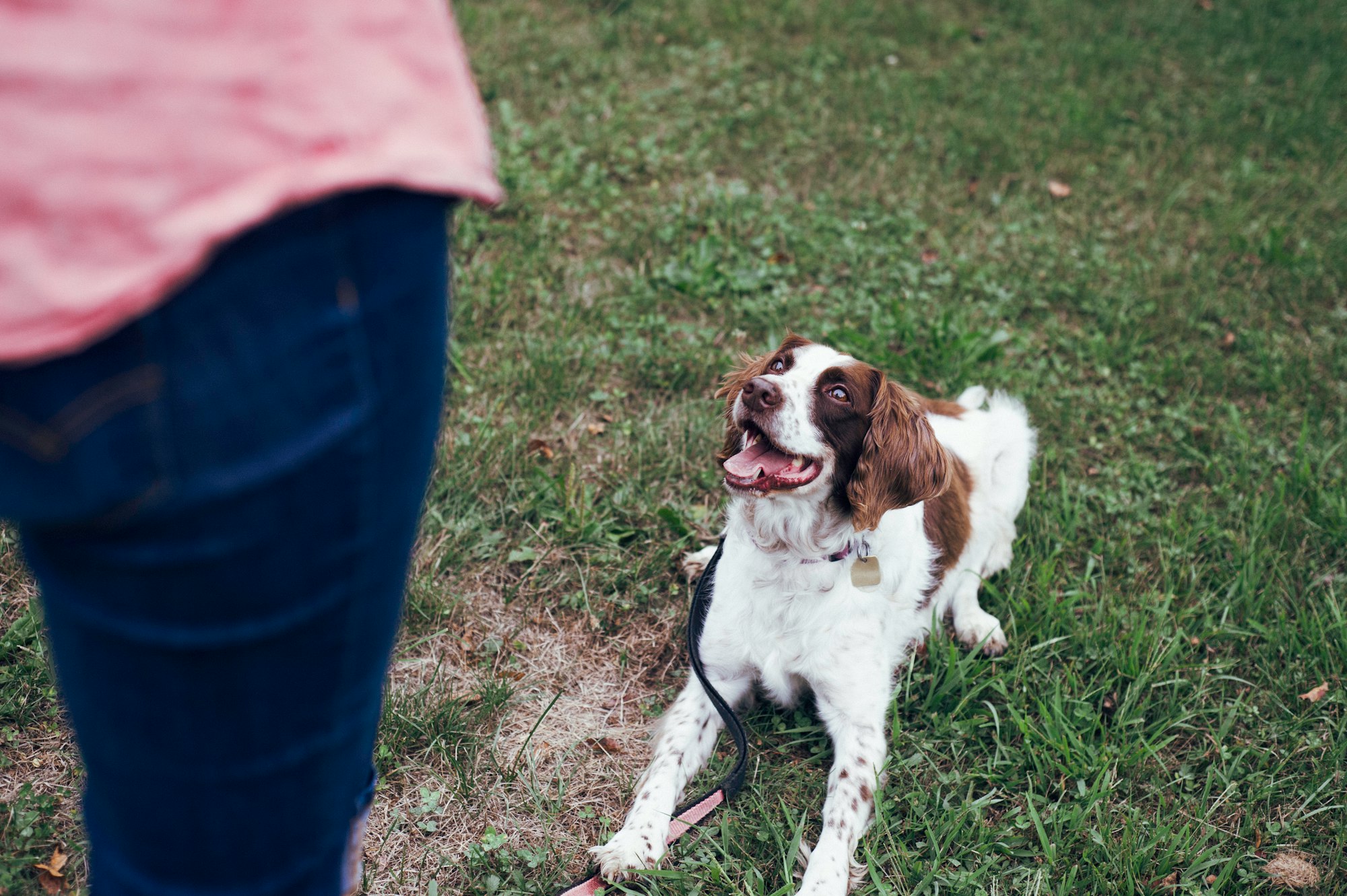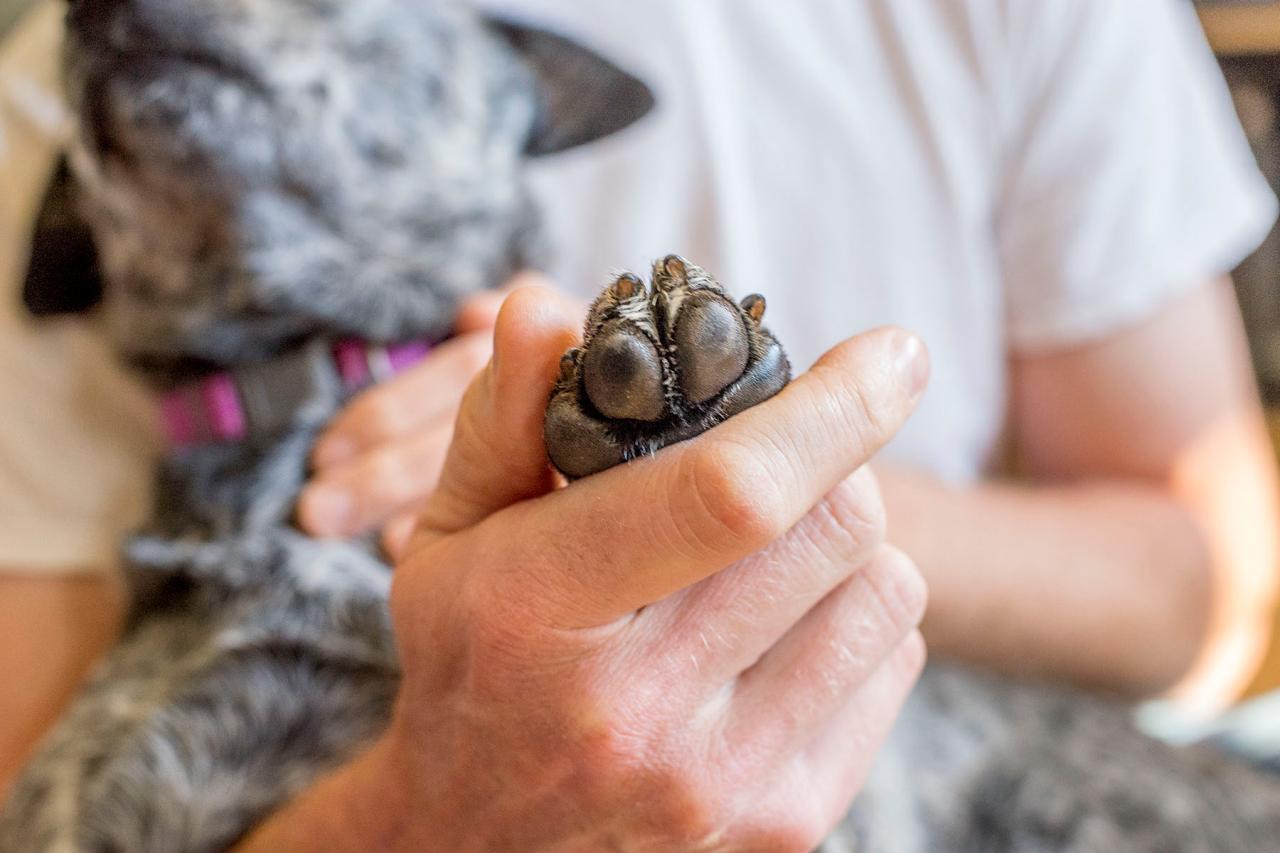In a world where human relationships can be complex and sometimes challenging, there's one connection that remains pure, unconditional, and steadfast—the bond between humans and dogs. For centuries, this remarkable bond has thrived, with dogs earning their well-deserved title as "man's best friend." Their unwavering loyalty, joyful companionship, and uncanny ability to understand us make them exceptional members of our families and beloved pets.
As we invite these four-legged furballs into our lives, something extraordinary happens. We find ourselves communicating with them on levels beyond spoken language. Dogs seem to pick up on our emotions, moods, and even nuances in the way we speak. Have you ever noticed that your dog reacts differently when you talk to them in a particular tone or pitch? That's because dogs have an incredible knack for interpreting different voice pitches, and the power of tone plays a crucial role in their understanding of human communication.

The Science of Canine Hearing
Before we dive into the fascinating world of voice pitches and how dogs perceive them, let's take a moment to appreciate the remarkable sense of hearing that dogs possess. Canines have evolved to become masters of auditory perception, far surpassing human capabilities in this realm. While humans typically hear sounds between 20 Hz and 20,000 Hz, dogs can detect frequencies ranging from 40 Hz to an impressive 60,000 Hz.
This extraordinary hearing range equips dogs with an acute ability to detect even the slightest variations in pitch and tone. It enables them to capture subtle cues in our voices that might go unnoticed by the human ear. As a result, dogs have become incredibly sensitive to the emotional content conveyed through the tones we use to communicate with them.
High-Pitched Voices: The Language of Love
You've probably caught yourself using a high-pitched, affectionate voice when talking to your furry friend. Often referred to as baby talk or pet-directed speech, this higher-pitched tone is a universal phenomenon among dog owners. But why do we do it, and how do dogs respond?
Research has shown that dogs react positively to high-pitched voices. These tones are typically associated with positive emotions like love, excitement, and playfulness. When we use a high-pitched voice, our facial expressions and body language often soften, further conveying our affection to our canine companions.
Interestingly, the roots of this communication style can be traced back to how dogs interact with their puppies. Mother dogs naturally use higher-pitched vocalizations when communicating with their pups, creating a sense of comfort and safety. As a result, adult dogs may carry this association into their relationships with humans, interpreting our high-pitched voices as expressions of love and care.
Low-Pitched Voices: A Source of Comfort and Security
While high-pitched voices have their place in communicating affection, low-pitched voices play an equally important role in the dog-human connection. A calm, soothing voice in a lower tone can have a comforting effect on dogs, particularly in stressful situations.
When you speak in a low-pitched voice, your dog may interpret it as a sign of reassurance and authority. It can convey a sense of security, helping to alleviate anxiety and fear in certain situations. However, it's crucial to strike a balance and avoid using overly stern or consistently low tones, as this could evoke fear or intimidation.

The Impact of Tone in Training and Commands
Voice pitches play a crucial role in training and issuing commands to our canine friends. Dogs are incredibly responsive to vocal cues, and the tone we use can greatly influence their behavior and learning process.
Using Tone to Reinforce Positive Behavior
Positive reinforcement is a widely recognized and effective training technique for dogs. When you use a high-pitched, enthusiastic tone to praise your dog for good behavior, it serves as a powerful motivator. Dogs thrive on approval and are more likely to repeat behaviors that elicit positive reactions from their owners.
For example, when you exclaim, "Good boy!" in an excited, high-pitched voice after your dog obeys a command or performs a desired action, it reinforces the connection between the behavior and the reward. With consistency, your dog will associate the specific command or behavior with the positive tone and be more inclined to repeat it.
Avoiding Mixed Signals: Consistency in Voice Commands
While using different tones for praise and reprimands may seem natural, it's essential to maintain consistency in your voice commands. Dogs primarily respond to the emotional content in your voice rather than the specific words. If you use a high-pitched tone to issue a command one day and a low-pitched tone the next, it can lead to confusion and make it challenging for your dog to understand what you want them to do.
To ensure effective communication, establish clear voice commands and stick to a consistent tone for each command. For example, use a firm, assertive tone for commands like "sit" and "stay," and a cheerful, encouraging tone for commands like "come" and "fetch." This consistency helps your dog better understand your expectations and reinforces the connection between the command and the appropriate response.
Finding the Ideal Pitch for Training Success
Every dog is unique, and their responses to voice pitches may vary. As a responsible dog owner and trainer, it's crucial to pay attention to your individual dog's reactions and tailor your training approach accordingly.
Some dogs may respond exceptionally well to high-pitched, excitable tones, while others may find it overwhelming or distracting. On the other hand, some dogs might respond better to lower, calmer tones, especially if they are more sensitive or anxious.
Experiment with different voice pitches during training sessions and observe how your dog reacts. Notice which tones elicit the most positive responses and help reinforce desired behaviors. Finding the ideal pitch for your dog can enhance the effectiveness of your training efforts and contribute to a stronger bond between you and your furry companion.
The Contextual Understanding of Dogs
When you speak to your dog, they consider not only the tone of your voice but also the situation and environment in which the interaction takes place. For example, if you use a high-pitched, excited tone while preparing their leash for a walk, your dog may associate that tone with the upcoming enjoyable activity of going for a walk.
Conversely, if you use the same high-pitched voice while visiting the veterinarian, your dog may interpret it as an indication of anxiety or unease, especially if they associate the vet with less pleasant experiences.
Interpreting Your Dog's Responses to Different Tones
As you communicate with your dog, pay close attention to how they respond to different tones. Notice their body language, facial expressions, and overall demeanor. Dogs are highly intuitive and will react to the emotional cues they perceive in your voice.
If you notice that your dog seems uncomfortable or stressed in response to a particular tone, it might be best to adjust your approach. Likewise, if they respond positively to a specific tone, use it to your advantage during training and to reinforce positive behaviors.
Strengthening the Human-Canine Bond through Tone Awareness
Understanding the significance of voice pitches in canine communication can lead to a deeper and more meaningful bond between you and your furry companion. By being mindful of your tone and remaining consistent in your communication, you can build trust and mutual understanding with your dog.
As you continue to interact with your canine friend, remember that they perceive the world through a unique lens, relying on their acute senses and instincts. Embrace the power of tone as a tool to enhance your communication and emotional connection with your dog. By speaking the language of love and understanding, you'll unlock the true potential of the human-dog relationship, making it a source of joy and fulfillment for both of you.

Conclusion
Our canine companions possess an extraordinary ability to read and interpret the subtle nuances of our voice pitches. Whether it's the excitement in our high-pitched praises or the reassurance in our low-pitched comforts, dogs respond to our emotions and intentions, even if they don't understand our words.
The power of tone in dog communication goes beyond mere words—it's an emotional language that fosters a deep connection between humans and their furry friends. By being mindful of the tones we use, remaining consistent in our commands, and paying attention to our dogs' responses, we can strengthen the bond with our loyal companions.
As you continue to share your life with your dog, cherish the moments of communication, understanding, and unconditional love that you both bring to each other's lives. Embrace the unique language you share, and let the power of tone be the symphony that orchestrates the beautiful melody of the human-canine bond.






